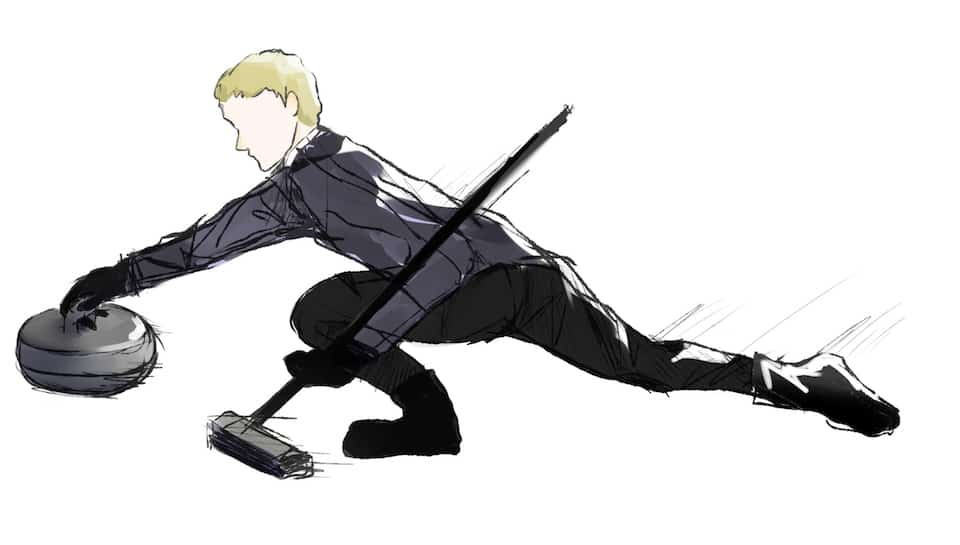As winter dawns, so too does the season for Canada’s lesser known winter sport which is also played on ice: curling. A couple of weeks ago, I found myself walking through campus with a curling broom in hand. I had to rush from a meeting on campus to my game that evening. My bizarre load was met with more than a few strange looks as passers-by cocked their heads in order to read the brand name off the side of the device. From their looks of bewilderment, I ascertained that most people on campus that day had no idea what my curling broom was, and those that did were probably perplexed by the fact that I was hauling it around, despite there not being a curling club in near proximity.
Regardless of the perceptible lack of enthusiasm among the younger generation, curling continues to be one of the sports that Canadians regularly excel at. The Canadian men’s team has brought home gold for the past three winter Olympic games, and the women have placed third, second, and first over the same time span. Even more impressive is the fact that, throughout all of these victories, Canada was represented by completely different teams of four. It is arguable that the Canadian championships are more competitive than the world championships. This may compel any reasonable person to conclude that Canadians are badass at this sport.
But is it really a sport? Isn’t it just darts on ice? These are questions curlers hear all the time. And, from what I’ve heard, their responses tend to be the same: once you try it, you’ll love it. Until then, here are some mythbusters to get you started.
Myth: The aim of curling is to throw the rock as close to the centre of the rings (the button) as possible.
Fact: Much of the confusion surrounding curling has to do with scoring. It’s easy to understand why. Each sheet of ice on which curling is played is adorned with two sets of concentric circles (the rings) that resemble targets or dart boards. A game of curling consists of a set number of rounds (ends) in which 16 rocks are thrown, eight by each team. Scoring does not occur until after all 16 rocks are thrown. The rock that is closest to the button scores one point. The team that threw that rock may score one additional point for each rock that is closer to the button than the other team’s closest rock.
Myth: Some people throw, some people sweep.
Fact: At first glance, it would seem that the four players on each curling team have clearly distinguished roles: one athlete throws, two athletes sweep, and one person yells loudly (hurry hard!) from the other end. Actually, every person on each team throws two rocks, in a predetermined order according to each player’s position on the team: lead, second, vice and skip. Because of the way the scoring works, the skip has the most important position, and this is the person who directs the team from the other end of the ice. The two people of the Lead, Second, and Vice who are not throwing, sweep the rock.
Myth: Sweeping a rock directs it one way or another
Fact: This is a very common belief about curling that has, until recently, held no grounds. Curling ice is pebbled in order to create friction, which allows the rocks to curl in the direction it was released. All sweeping does is heat up the ice in order to reduce friction along the rock’s path. This has two effects: first, it causes the rock to decelerate more slowly, and second, it reduces the rock’s curl. The skip calls for sweeping in order to adjust for the line and weight of the rock. Recently, the Hardline curling company came out with icePad technology brooms, which supposedly allow sweepers to manipulate the direction of the rock when sweeping. This has caused an uproar in the curling community, with veteran athletes saying the technology compromises the integrity of the game.
Myth: All curlers drink a lot of beer
Fact: This is probably not true of Olympic or tournament curlers, but at your average community weekend bonspiel (curling tournament) expect pints and people in equal proportions. It is also considered curling etiquette for the winning team to buy the losing team a round of drinks after the game.


